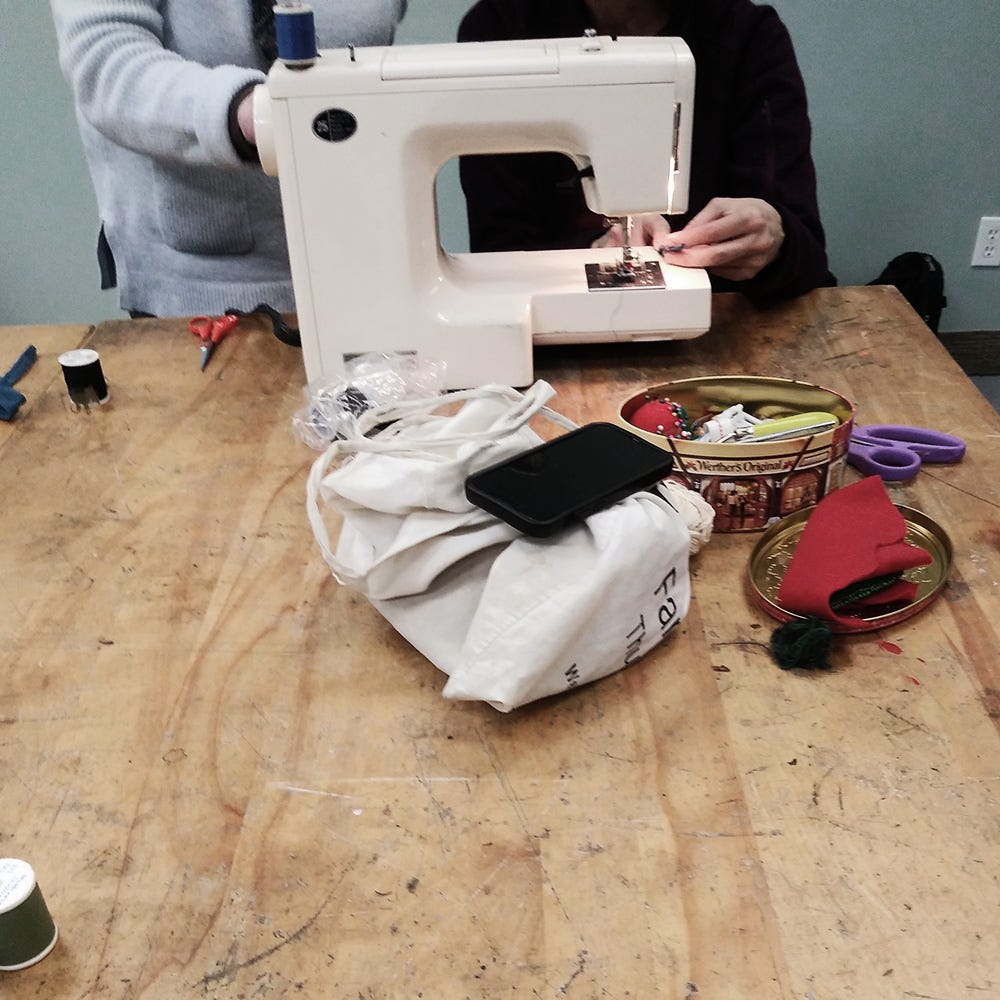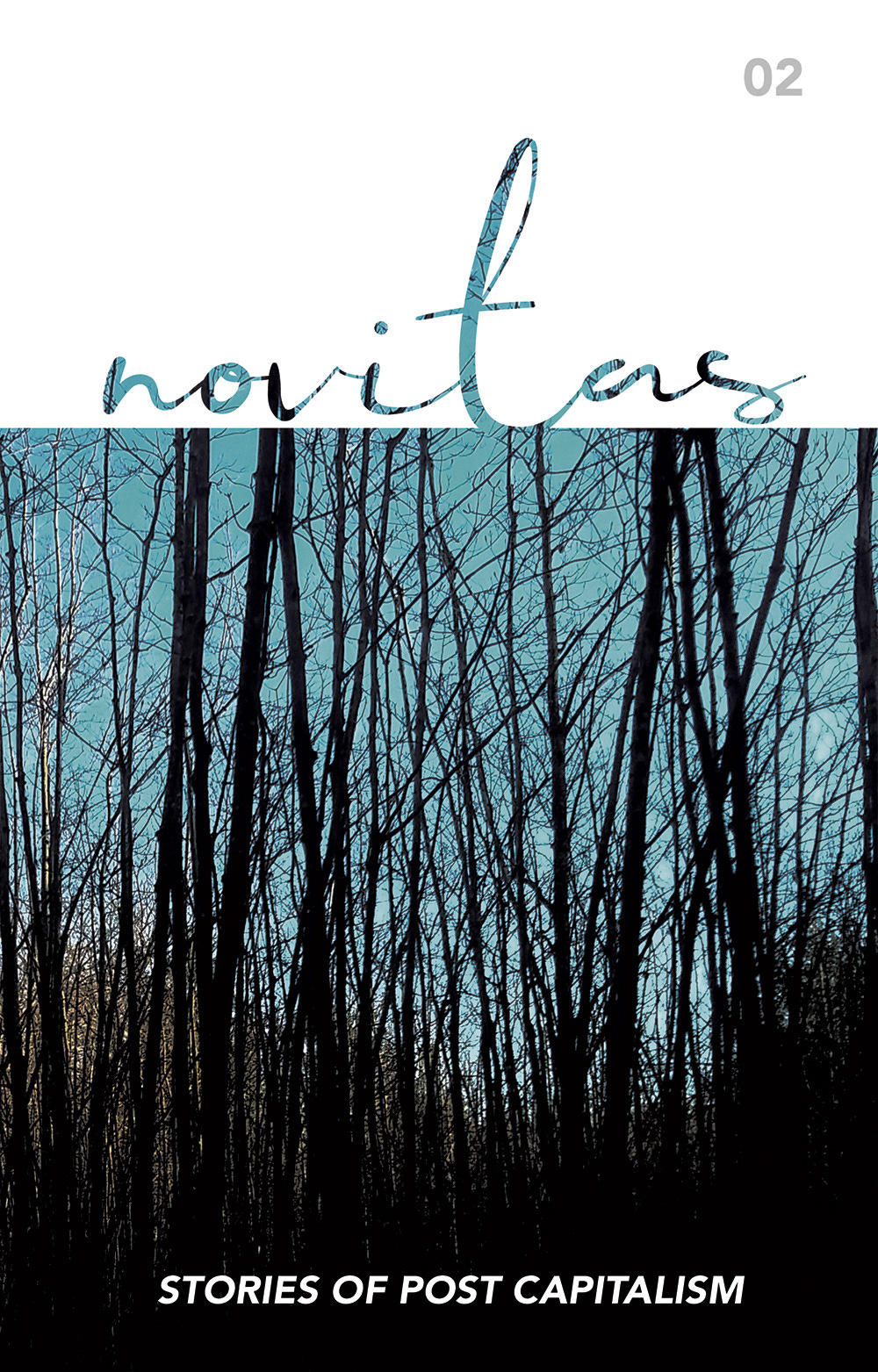Third Spaces
Thoughts on documenting the process, why the post-capitalist infrastructure we need is already here, and an update on issue 2 of the Novitas magazine.
I read a note on Substack the other day suggesting that rather than making content, we should document the process. It resonated. I’m really tired of making content for the content machines. I am drawn, however, to documenting processes. The change in intention reminds me of the old pre-MySpace blogs that I used to keep, writing quick snippets of my emotional state or philosophical understandings on overly stylized bespoke web designs: blogs that weren’t really meant for anyone to read, but more for myself to document pieces of my life I thought worth preserving.
And sometimes it seems as though we forget that we get to decide how to use social media spaces—that we have agency in that process of documenting. We are not slaves to the likes and retweets. There is a deep power in social media to connect us as humans and not just consumers, and the infrastructure of social media platforms can still be used to foster those connections while we document rather than create content for the insta-gods.
In the spirit of process documentation, here’s what’s up with Novitas:
We are missing two podcast episodes from the contributors from the first issue. That’s okay. All deadlines are self-imposed! Hopefully, I’ll be able to catch up with Fran and Emme as we move into the second issue.
The second issue is ready for print! I’m a bit behind my self-imposed schedule, but with good reason. I’ve been chatting with a local independent print studio, PS Guelph, about them crafting the printed copies of the second issue. We are working out the final details of the process but should have some beautiful, perfect, hand-bound issues ready to share soon!
Presales of the second issue are available online at https://www.novitasmag.com/product/novitas-magazine-issue-2/ for a sliding scale fee of $15-25 plus shipping. This is, of course, to help make the magazine more accessible to more people.
In this spirit, we have also decided to offer a digital copy of the second issue. I’m seriously conflicted about this because I fucking love print and want you to hold these beautiful words in your hands when you read them, but I also recognize that there is a magic in spreading the stories of post-capitalism far and wide online as well. Digital copies will be available when the print copies are ready to ship. Stay tuned.
I (obviously) am very excited for this next issue. Aside from having learned more about the design process and tools for collaboration, there are some amazing contributors who are doing really, REALLY good work out there in the world and creating positive change outside the capitalist paradigm. As with the first issue, the thread that weaves these stories together is that we have to do this work together in community.
Learning to build and rely on community has been a common thread on my feeds as of late. Between the climate collapse and natural disasters pushing people to build local networks of mutual aid and the near-fascist governments and tech conglomerates making it unsafe for marginalized folks to exist in public spaces, my social media world seems to have transitioned almost completely into providing tools, resources, and methodologies about how we need to come together in order to survive.
This is a good thing, I think.
It has got me a-dreaming about what neighbourhood or maybe city-wide community looks like in real space. I’ve been thinking about potlucks and workshops and clothing swaps. I’ve been seeking out spaces and comrades. And up until yesterday, I was dreaming about what creating a new local third space might entail.
Third spaces are not new to Novitas. The first issue of the magazine had stories from Project Knotwork and Free Spirit Forest School: two wonderful examples of what it means to exist in third spaces with community. This second issue features stories from The Rhizome House and Firestorm Co-op. I am inspired by these stories of people co-creating space as a container for community to come together.
“In sociology, the third place refers to the social surroundings that are separate from the two usual social environments of home ("first place") and the workplace ("second place"). Examples of third places include churches, cafes, bars, clubs, libraries, gyms, bookstores, hackerspaces, stoops, parks, theaters, among others. In his book The Great Good Place (1989), Ray Oldenburg argues that third places are important for democracy, civic engagement and a sense of place. Oldenburg's coauthor Karen Christensen argues in the 2025 sequel that third places are the answer to loneliness, political polarization, and climate resilience. She also clarifies the difference between third places and public spaces.
Oldenburg called one's "first place" the home and the people the person lives with. The "second place" is the workplace—where people may actually spend most of their waking time. Third places, then, are "anchors" of community life and facilitate and foster broader, more creative interaction. In other words, "your third place is where you relax in public, where you encounter familiar faces and make new acquaintances." ” (source)
And up until yesterday, I was actually plotting on how I might create a space locally to house all the activities that I’ve been dreaming in my head. I was thinking about community funding models and looking into rent costs.
But then, this morning, I realized suddenly that these spaces already exist.
As I was doing some research online around event listings, I saw a post for a community clothing repair event and another for a clothing swap. I dug a bit deeper and learned about a community art space that hosts regular workshops that I had never heard of before. I got thinking about some of the community spaces that already exist locally for me and all the events that they host and realized that there is not a lack of space, but a lack of connection.
What I mean to say is this: we have the infrastructure. We have the containers. We have the organizers. We do not necessarily need more of these things (which is hard because new projects are often where the new energy comes from…).
What we don’t have is the energy or the time or the spoons to fill out these containers. We are exhausted and tired and utterly worn out.
So the question burning in my head yesterday is how do we make space for community building, but the question burning in my head today is what can I do to help other people come together in real space to feel energized by community?
And that is a much harder question to answer.
I suppose the start of an answer is to ensure that, in coming together, people feel both nourished and cared for—that the events and gatherings are designed to help meet the needs of the participants as opposed to selling and pushing the tireless message of colonial capitalism.
People can only be energized when their needs are met. We can only really support others when we ourselves are supported. And so we weave the messy, sometimes entangled web of mutual aid.
Yes, community building is about third spaces, but it is more about the people in those third spaces and less about the physical spaces themselves. As Oldenburg outlines, a third space can be a stoop or park bench. We don’t need to go broke finding containers to put community into. It is the people that are missing, not the infrastructure itself. It’s so easy to get excited about creating infrastructure, and I’m sure that’s why my brain loves to go there first. But the real challenge lies in community engagement. After all, empty spaces don’t support anyone.
I did end up going to the community mending event and there was 5 other people there and we all sewed and stitched together, sharing information and knowledge, gossiping a bit about local news. It was wonderful, but there are undoubtably more than 5 people in this city that need clothes mended.
My personal challenge over the coming months will be to engage more with the people I know: those who are doing good work but also those who need more support. I make a pledge here to extend more invitations, have more online chats and coffee dates, share more meals, and go to more events. Because all these things are already available to me, I don’t need to start new projects or build new infrastructure; I just need to engage with what’s already happening.





Agree on your thoughts on the third place. We have them, we just need to organize at them in ways that best serve our communities. It's a challenge to figure out what we want to get out of them.